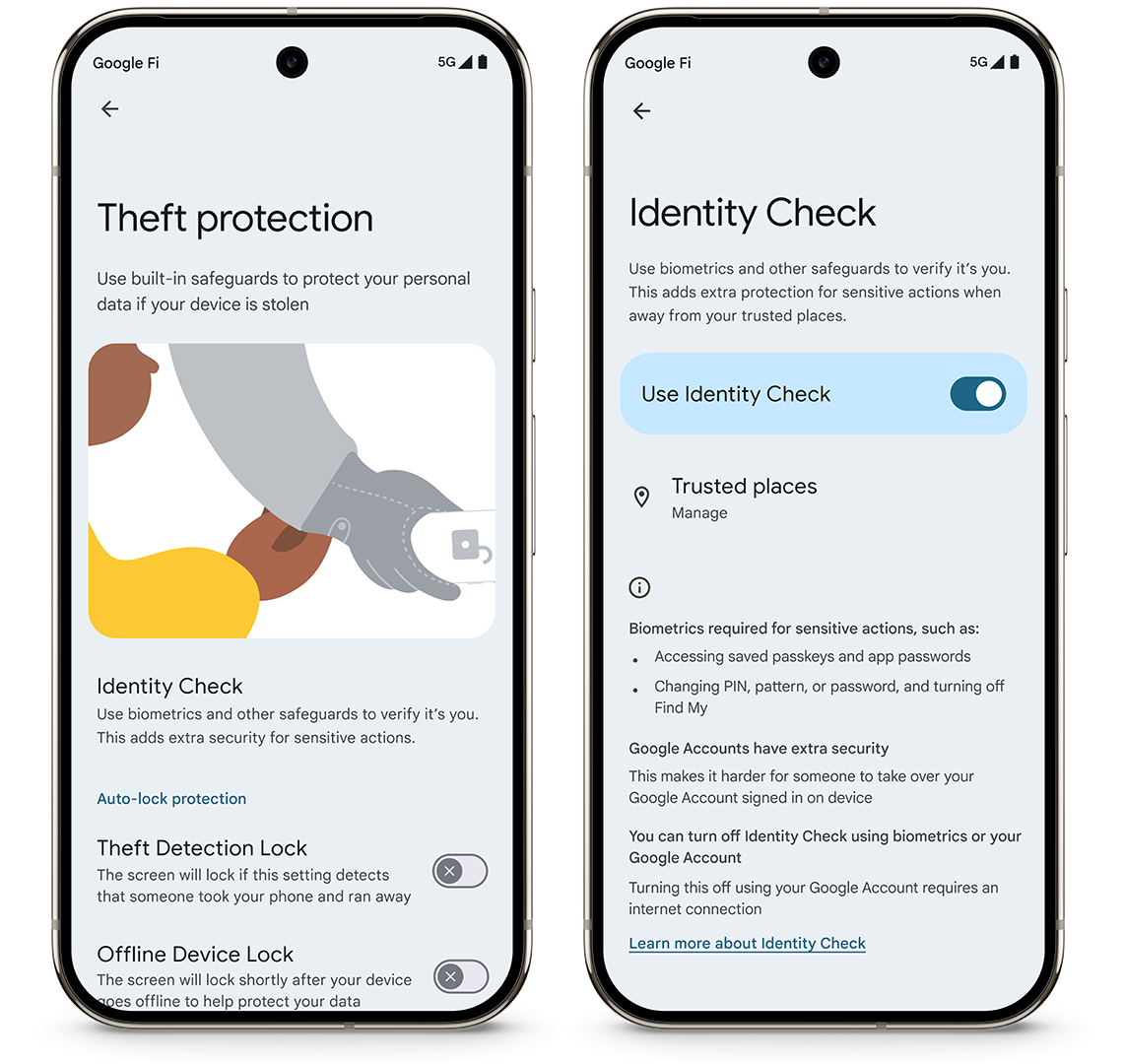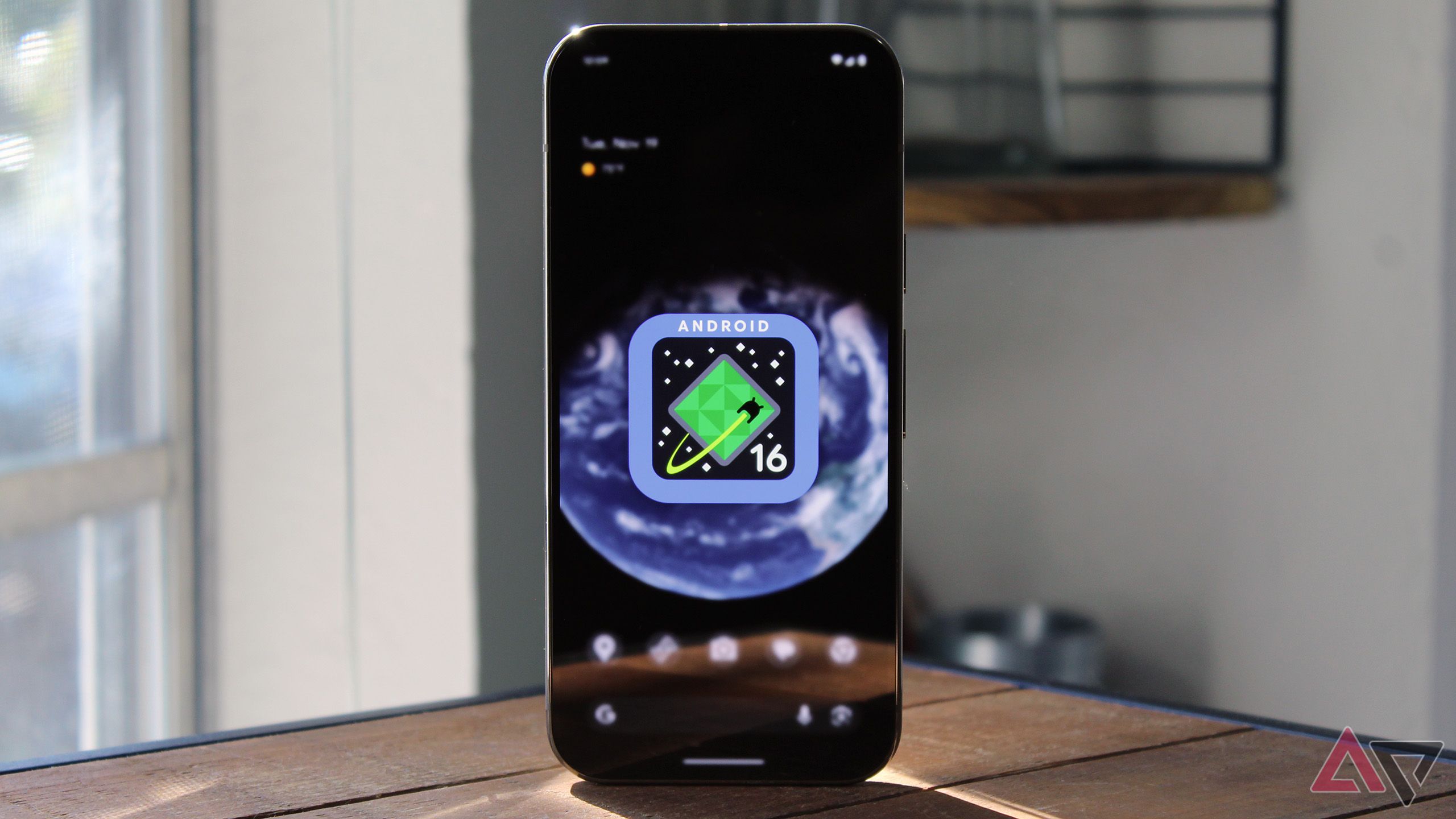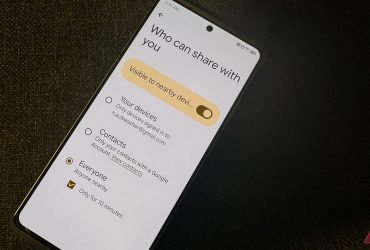
Sign in to your Android Police account

Summary
- Google initially launched its anti-theft features, including Theft Detection and Offline Device Lock, on Pixel phones in the US starting in October 2024, following a trial in Brazil.
- The Identity Check feature, which requires biometric authentication for sensitive actions outside trusted locations, was initially limited to Pixel and some Samsung devices but has now been spotted on a OnePlus 13 running the Android 16 beta, suggesting wider availability with the Android 16 update.
- The broader rollout of Identity Check is likely tied to Android 16 because the feature requires modifications to a core OS component, which are fully integrated into the new OS version, making implementation easier for other Android device manufacturers.
Google Pixel’s range of anti-theft features began landing in the US back in October 2024, following a brief testing period in Brazil.
Features like Theft Detection and Offline Device Lock were rolled out in October, essentially ensuring your device automatically locks itself if it detects it has been snatched away, or if it goes offline, respectively. Subsequently, in late January this year, Google bolstered its suite of anti-theft features with the introduction of Identity Check, and it looks like the feature could soon make its way to more Android devices.
For the uninitiated, Identity Check, as the feature’s name suggests, strives to ensure the identity of the person operating your device. Considering that your password, pattern, or PIN can be guessed and/or observed by a phone thief, Identity Check forces biometric authentication whenever the occasion calls for it. It automatically triggers when accessing sensitive apps or account/device settings when the device is outside its designated trusted location(s), ensuring that someone with unauthorized access can not change critical security parameters on your device.
When first released, the feature was limited to Pixel and specific Samsung One UI 7 devices. At the time, Google indicated that Identity Check would roll out to “supported Android devices” from other OEMs later this year. As it turns out, “supported Android devices” might refer to devices that can upgrade to Android 16 .
Android 16 beta hints at wider Identity Check availability

Source: Google
The folks over at Android Authority found the feature on their OnePlus 13 after updating it to Android 16 beta 2, indicating that more OEMs could hop on the Identity Check train with the major OS update. If you have a OnePlus 13 device, updating to Android 16 should highlight the new feature under Settings → Google → Theft Protection.
According to credible Android analyst and leaker Mishaal Rahman, there’s a good reason why OEMs might favor adopting the feature with Android 16, in comparison to Android 15. In its initial implementation, Google modified the biometric prompt code to prevent password, pattern, or PIN authentication when Identity Check was active. Implementing the change required modifications to a core and non-updatable OS component, needing an OS update to be deployed.
Pixel devices got it with Android 15 QPR1 while Samsung decided to integrate the feature within its One UI 7. Android 16 will consolidate all foundational changes from Android 15 QPR1 and QPR2, making wider Identity Check implementation more straightforward for OEMs.

Related
What’s your reaction?
Love0
Sad0
Happy0
Sleepy0
Angry0
Dead0
Wink0











Leave a Reply
View Comments